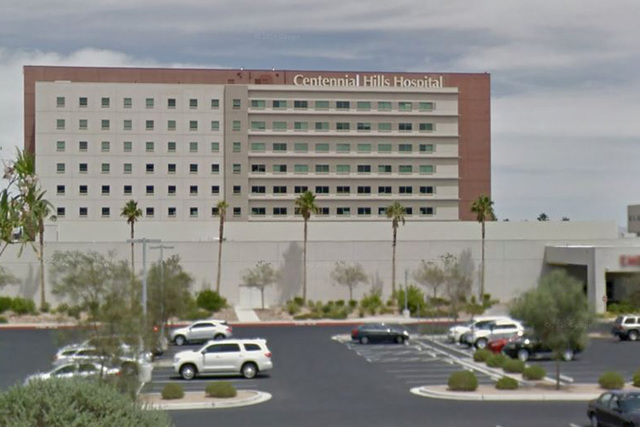Nevada ranks 43rd in hospital safety report, but that’s an improvement
Most of Nevada’s hospitals are struggling to make the grade when it comes to patient safety, according to a new report by a national health-care watchdog that placed the state near the bottom of its rankings.
The hospital safety grades report, compiled twice annually by nonprofit The Leapfrog Group, ranked Nevada 43rd out of 49 states and Washington, D.C., in terms of the percentage of hospitals earning A grades under its 30-component ranking system. Maryland was not included in the report.
Overall, just three of Nevada’s 20 ranked hospitals received A’s for patient safety — all of them in Northern Nevada. Four received B’s, and 13 received C’s. No Nevada hospitals received a D or F.
In Southern Nevada, three hospitals received B’s and 10 were awarded C’s.
The data used to score hospitals is collected from Medicare, a voluntary Leapfrog survey and a volunteer survey from the American Hospital Association. Patient safety experts compile the grades using 30 measures, ranging from the rate of infections and surgical problems to patients’ views on the responsiveness of hospital staff.
The results, released late Sunday, were an improvement for Nevada from Leapfrog’s last report this spring, when only one of 19 ranked hospitals — Renown South Meadows Medical Center in Reno — earned an A and Nevada ranked 46th overall.
Among notable grades awarded to Southern Nevada institutions in the new report: Centennial Hills Hospital Medical Center, St. Rose Dominican Hospitals - Rose De Lima Campus and Mountainview Hospital in Southern Nevada each received B grades.
Clark County-run University Medical Center received a C, up from a D in the spring.
In Northern Nevada, Renown South Meadows repeated its A ranking from the spring, while two others — Banner Churchill Community Hospital in Fallon and St. Mary’s Regional Medical Center of Reno — improved to the top ranking. Banner improved from its previous B grade while St. Mary’s toppled its C score from spring.
Out of 2,633 hospitals ranked nationally, 844 institutions received A’s, 658 received B’s, 954 received C’s and 157 received D’s. Just 20 hospitals — about 1 percent of all ranked institutions— were awarded F grades.
Only hospitals for which there was sufficient data were scored.
Erica Mobley, a spokeswoman for The Leapfrog Group, said the results offer patients insight into how hospitals handle patient safety and which institutions have taken action to prevent accidents, injuries and infections.
“Our goal is to educate the public on hospitals that are doing well on protecting patients from harm and hospitals that have maybe a little work to do,” she said.
Though it’s a given that emergency cases should head to the nearest appropriate facility, patients facing planned procedures generally have the ability to shop around and match their needs to whichever hospital suits them, she said.
“For things like having a baby or having an elective knee surgery where you have an opportunity to think a little bit more about where you might like to go for care, this can be really valuable information,” she said.
She added that some hospitals have used the data as a galvanizing force to make improvements.
For UMC, which received a C in fall 2015 but has otherwise received D’s and F’s, the new C grade shows how the hospital is advancing, CEO Mason VanHouweling said in a statement.
“UMC’s ‘C’ is a two-grade improvement over previous scores and we are working diligently to continue our significant progress,” he said.
VanHouweling pointed out, however, that data used in the scoring can be years old, with some measures using data from 2013.
Since then, UMC had a nursing reorganization and altered administrative oversight to put patient safety “at the forefront of our operations,” he said.
Dignity Health-St. Rose Dominican, which operates Rose De Lima and two facilities that received C’s, said it takes public reporting seriously but believes the measures used by Leapfrog are “neither the best nor the only indicators of an institution’s quality.”
“We are concerned that the Leapfrog Group’s approach oversimplifies the complex task of measuring and improving quality,” the company said in a statement.
Nationally, Hawaii topped the state rankings with eight out of 12 of its institutions earning A grades. Idaho, Maine, Wisconsin and North Carolina rounded out the top five.
Alaska, Delaware, Washington, D.C., and North Dakota tied for last place, with no facilities in any of the states awarded A’s.
Contact Pashtana Usufzy at pusufzy@reviewjournal.com or 702-380-4563. Follow @pashtana_u on Twitter.


















